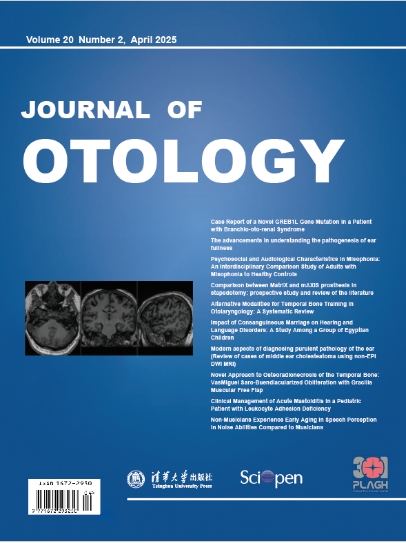| 投稿方式:官网投稿 |
- 栏目频次
- 单位占比
-
热词

高频栏目
中频栏目
-
更多
期刊简介
- 《中华耳科学杂志(英文版)》(Journal of Otology)(季刊)创刊于2006年,由解放军总医院医学创新研究部、解放军总医院第六医学中心耳鼻咽喉头颈外科医学部主办。要发表听觉和前庭系统以及耳部疾病相关的临床和基础科学研究成果。
-
基本信息
- 期刊名称:中华耳科学杂志(英文版)(或:耳科学杂志(英文))(Journal of Otology)
- 主管单位:解放军总医院
- 主办单位:解放军总医院医学创新研究部、解放军总医院第六医学中心耳鼻咽喉头颈外科医学部
- 国内刊号:CN 11-4883/R
- 国际刊号:ISSN 1672-2930;e-ISSN 2524-1753
-
- 出刊日期:
- 期刊定价:
-
- 邮发代码:
-
- 所在省区:北京
- 邮政编码:
- 联系地址:
-
投稿信息
-
- 学科分类:五官科学
- 版面费用:待核实
-
- 字数要求:8000-18000
- 查重要求:-
-
- 复合因子:0.367
- 综合因子:0.241
-
- 审 稿 费:待核实
- 稿费:待核实
- 本刊可发:
- 特殊属性:外文期刊
-
联系方式
- 投稿网址:https://mc03.manuscriptcentral.com/jotol
- 官网网址:https://www.sciopen.com/journal/1672-2930
- 电话传真:010-68286148(202502期);010-66939502(官网)
-
电子邮箱:zhek301@163.com(202502期)
joto301@vip.163.com(官网邮箱) - 微信公众号:

